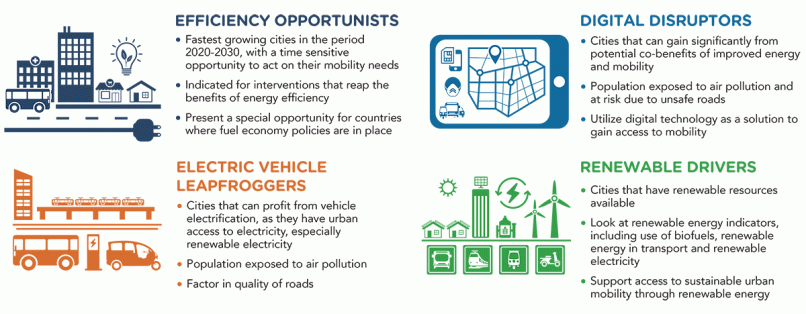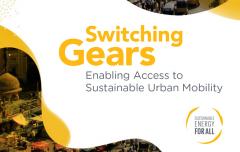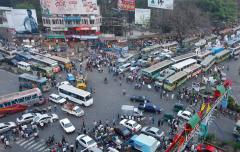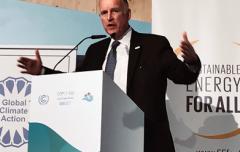Fast-growing cities can be leaders in low-carbon mobility by embracing sustainable energy
SEforALL’s new report Switching Gears: Enabling Access to Sustainable Urban Mobility explores how sustainable energy and low-carbon mobility can be developed together to provide access to urban mobility for all.
The report focuses on fast-growing, small-to-medium-sized cities with less than one million inhabitants in developing countries. It shows that these cities have the opportunity to continue growing and, at the same time, offer low-carbon mobility solutions, particularly for lower-income people and vulnerable populations.
Switching Gears identifies 19 priority countries – 13 in Sub-Saharan Africa as well as Bolivia, Honduras, India, Indonesia, Nepal and the Philippines – and an accompanying set of 260 fast-growing small-to-medium-sized cities where sustainable urban mobility services would have the highest impact on the Sustainable Development Goals (SDGs).
Sustainable mobility needs sustainable energy
Currently, only 3.3 percent of transport is renewable energy powered, which makes it the energy-use sector with the least progress in terms of decarbonization. Having access to sustainable mobility is a prerequisite to achieving several SDGs, and SDG7, which calls for affordable and clean energy, is a prerequisite for sustainable mobility.
Electrification is at a welcome tipping point, bringing the sustainable energy and mobility sectors closer together. Vehicle electrification is often used to refer to electric passenger vehicles, but this report shows that public transport with electric two- and three-wheelers and electric minibuses can provide significant efficiency and accessibility gains.
Scaling up these electric vehicle options calls for reliable and accessible power supplies.
Linking energy and mobility also has an impact on gender equality, health, cooling and education. These are crosscutting themes that require crosscutting ways to address them.
Importance of decarbonizing transport as cities are growing
Cities account for 70 percent of worldwide GHG emissions and 50 percent of the world’s population, but only 3 percent of Earth’s land area. At the same time, the number of people living in cities with polluted air has now reached 91 percent. Cities with a population of less than 1 million inhabitants are better positioned than mega-cities to decarbonize their transport systems and provide sustainable mobility access to citizens, supporting progress on the SDGs.
These smaller, fast-growing cities have a chance to leapfrog technologically and developmentally because they still can:
- Implement energy and mobility solutions easier, due to a theoretical lower complexity
- Create a more efficient infrastructure to avoid future gridlock or other lock-in effects
Energy efficient mobility solutions
Taking local differences into account, the report defines four city types and proposes a set of practical mobility solutions for these cities.
The solutions include integrated energy, land-use and mobility planning, demand-side targeting and management as well as electric mobility.





